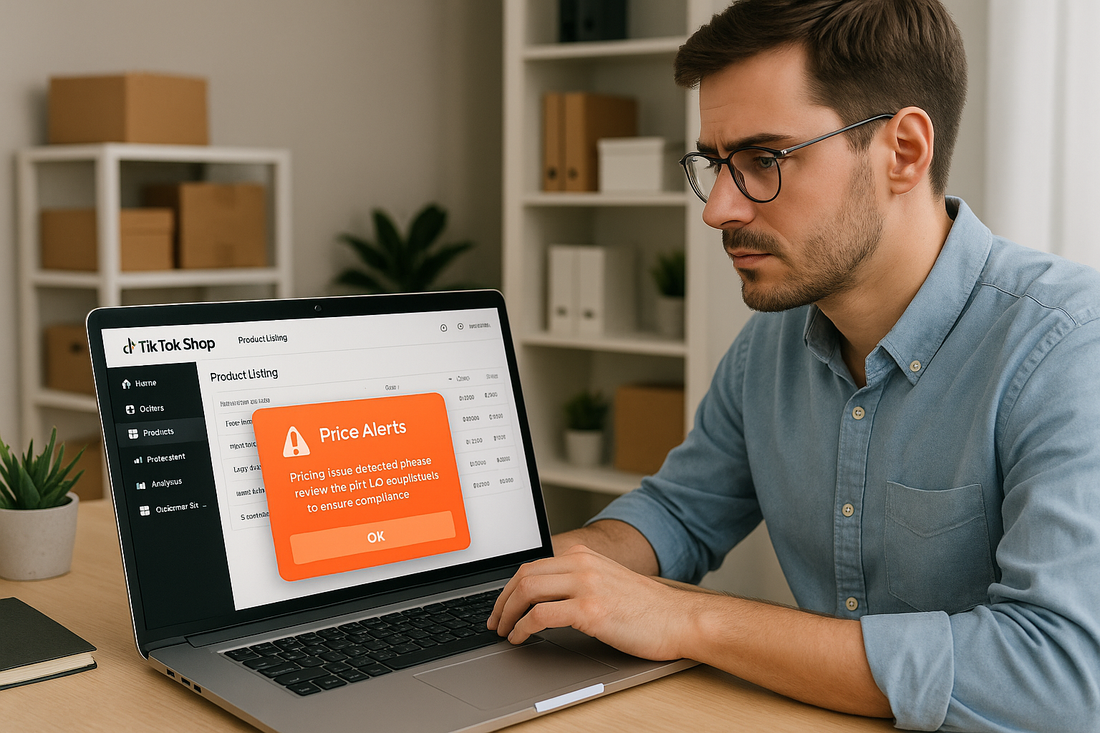
TikTok’s New Price Rules: What Sellers Need to Know Before Listing
Share
Introduction
This week, TikTok quietly introduced a major change that could catch a lot of sellers off guard.
Before your listing even goes live, TikTok will now run a pre-listing price check—blocking anything they detect as misleading or unreasonable. That means your product might not even make it onto the platform unless your pricing plays by their rules.
So, what exactly is changing—and what’s considered ‘unreasonable’ in TikTok’s eyes? Let’s break it down.
What is the TikTok Price Check?
In short, it’s an automatic review of the prices you submit during the listing process. If TikTok’s system believes your price is excessive, unrealistic, or inconsistent with your content—it will stop your listing from going live.
You’ll be asked to update your pricing and try again.
The Two Types of Price You Submit
When listing a product on TikTok Shop, you’re actually inputting two prices:
- List Price – your standard selling price
- Sale Price – a reduced price offered via TikTok promotions
Both are being scanned for violations.
What Kind of Prices Are Being Flagged?
Here’s what TikTok defines as problematic pricing:
1. Unreasonable Pricing
- Excessively high prices compared to similar items
- Listing the same item at multiple, fluctuating prices
- Pricing that seems unrealistic or artificial (e.g. £9999 for a phone case)
2. False or Misleading Prices
- Using fake discounts or “was/now” pricing to make a deal look better
- Inconsistencies between the title, images and listing price
3. Breach of Price Commitments
- Clickbait-style pricing to drive traffic
- Listing products at low prices that aren’t in stock
- Rapidly raising prices after gaining traction or virality
Why TikTok Is Doing This
It’s all about trust. TikTok Shop is moving fast—and trying to avoid the kinds of tactics that have hurt customer confidence on other platforms.
Unfair pricing damages long-term buyer trust. This update is about signalling that TikTok wants real, reliable sellers—not hacks or hype merchants.
For sellers, it’s also a step toward platform maturity. Automated enforcement means you need cleaner pricing strategy baked into your listings—not tacked on for attention.
What Sellers Should Do Now
- Benchmark your prices – look at what similar products are going for, especially within TikTok Shop itself.
- Clean up your listings – make sure titles, images and prices align. No mismatched info.
- Avoid artificial pricing tricks – no fake discounts or high-low tactics.
- Only list what you actually have – out-of-stock bait listings will be picked up quickly.
Does This Apply Globally?
For now, this appears to be rolling out on TikTok UK and US, with likely expansion as enforcement becomes more robust. So whether you're selling from Manchester or Miami—this matters.
Conclusion
Pricing used to be a grey area—something you could ‘test’ until you hit the sweet spot. But platforms are getting smarter, and they’re doing it fast.
This TikTok Shop price check update marks a shift from platform-as-place to platform-as-partner. If you want to win, your prices need to be competitive, clean and consistent. Not just in what you charge—but in what you communicate.
Stay ahead of changes like this by subscribing to the 30 Day Newsletter.
